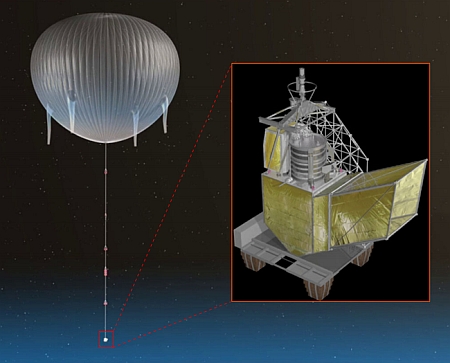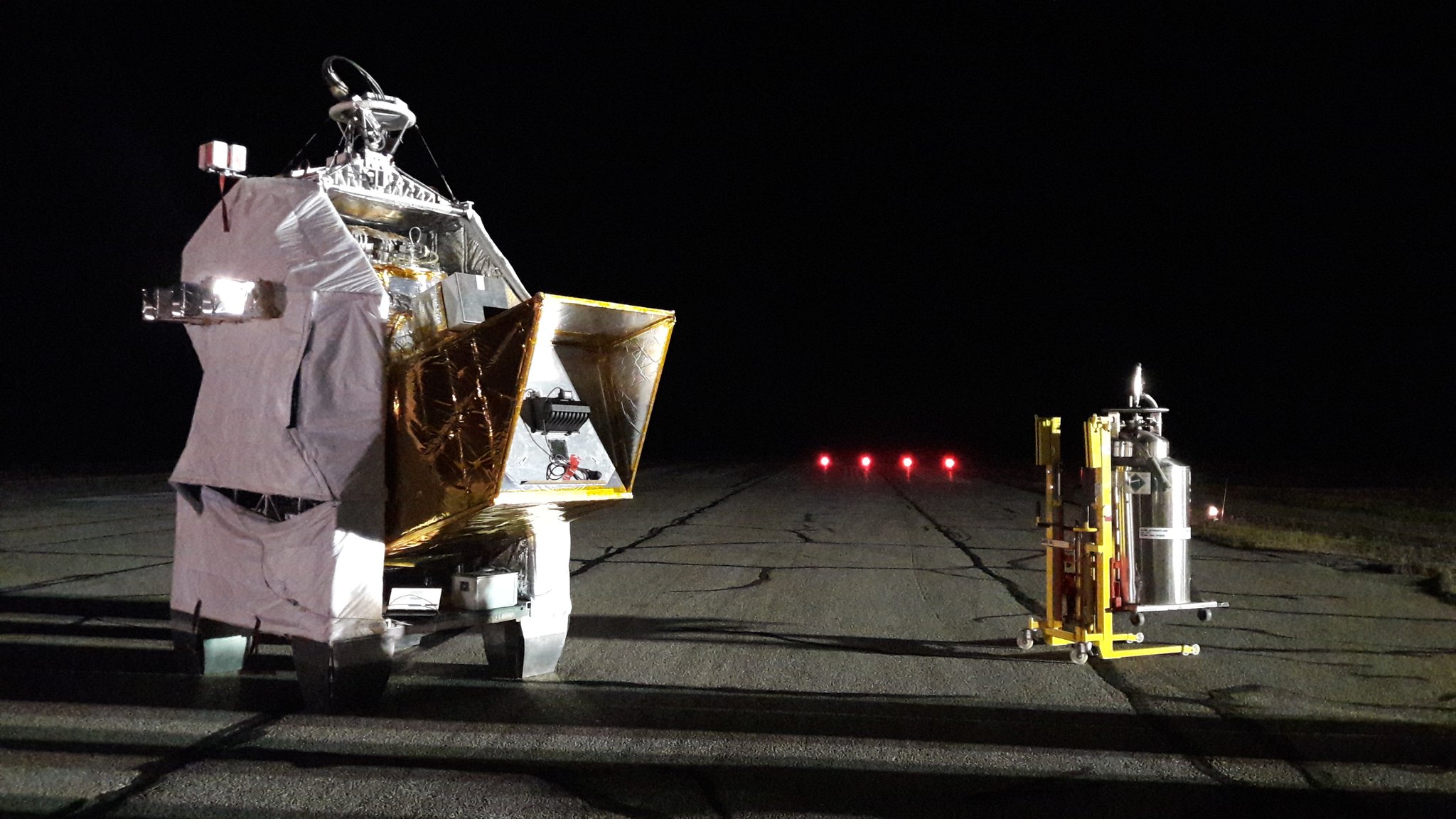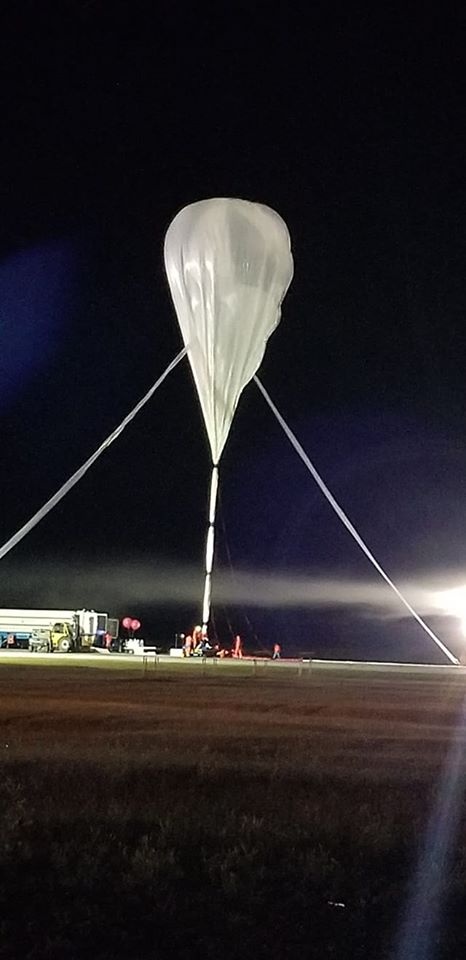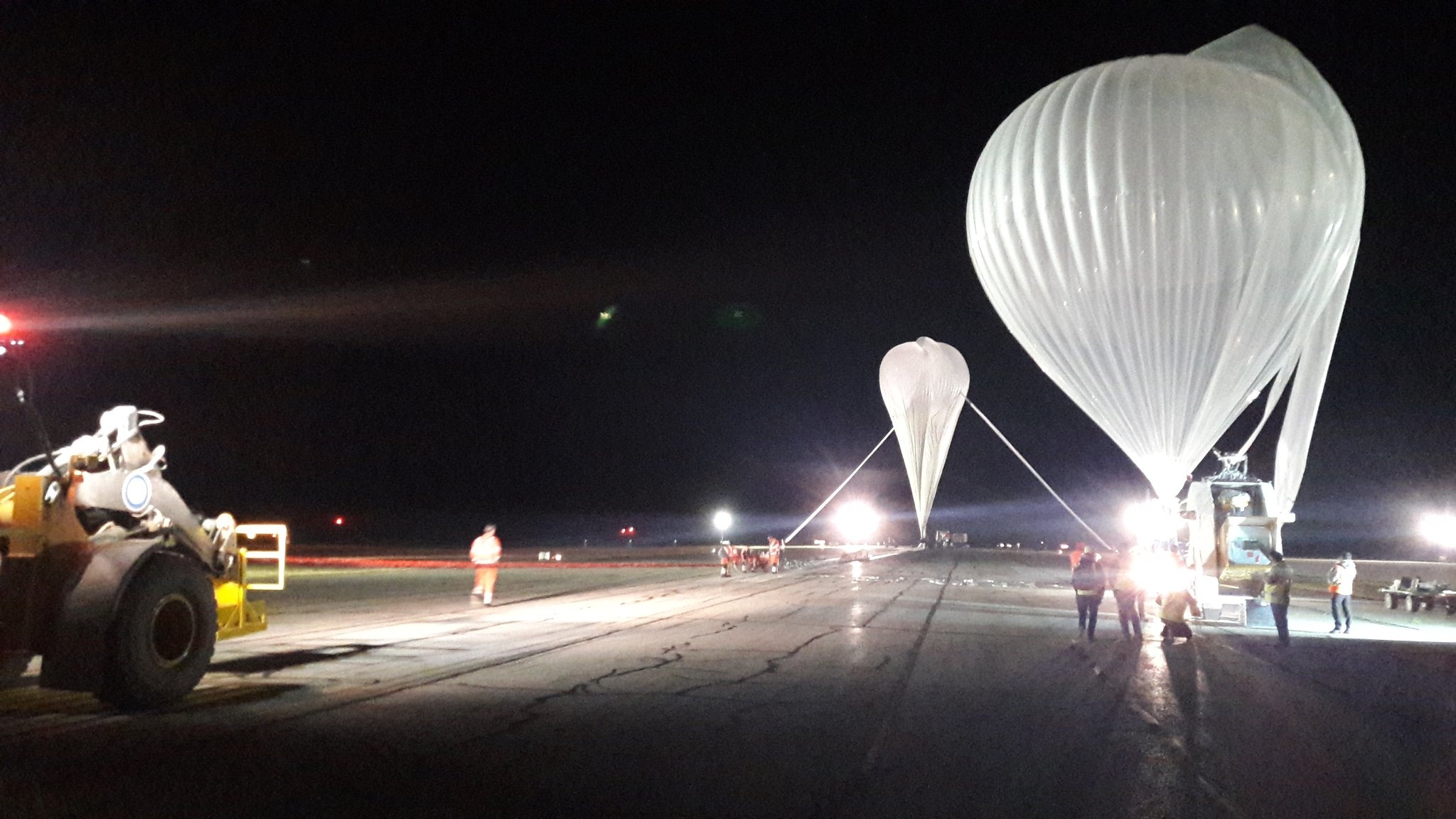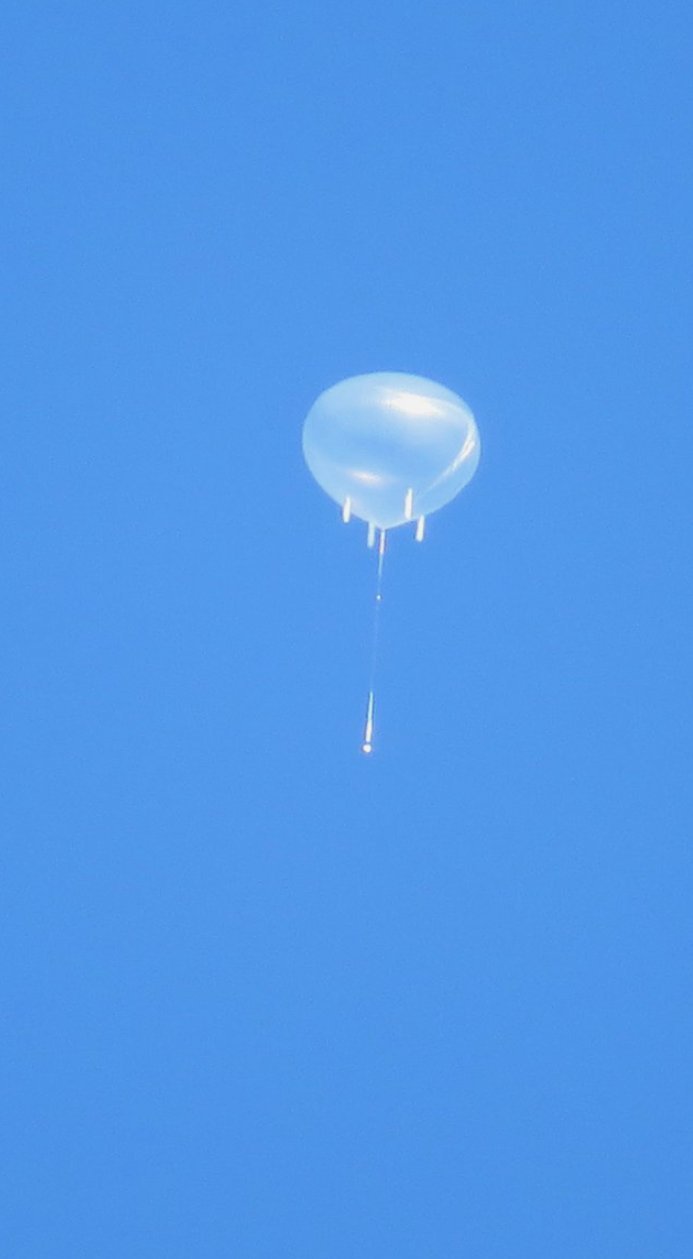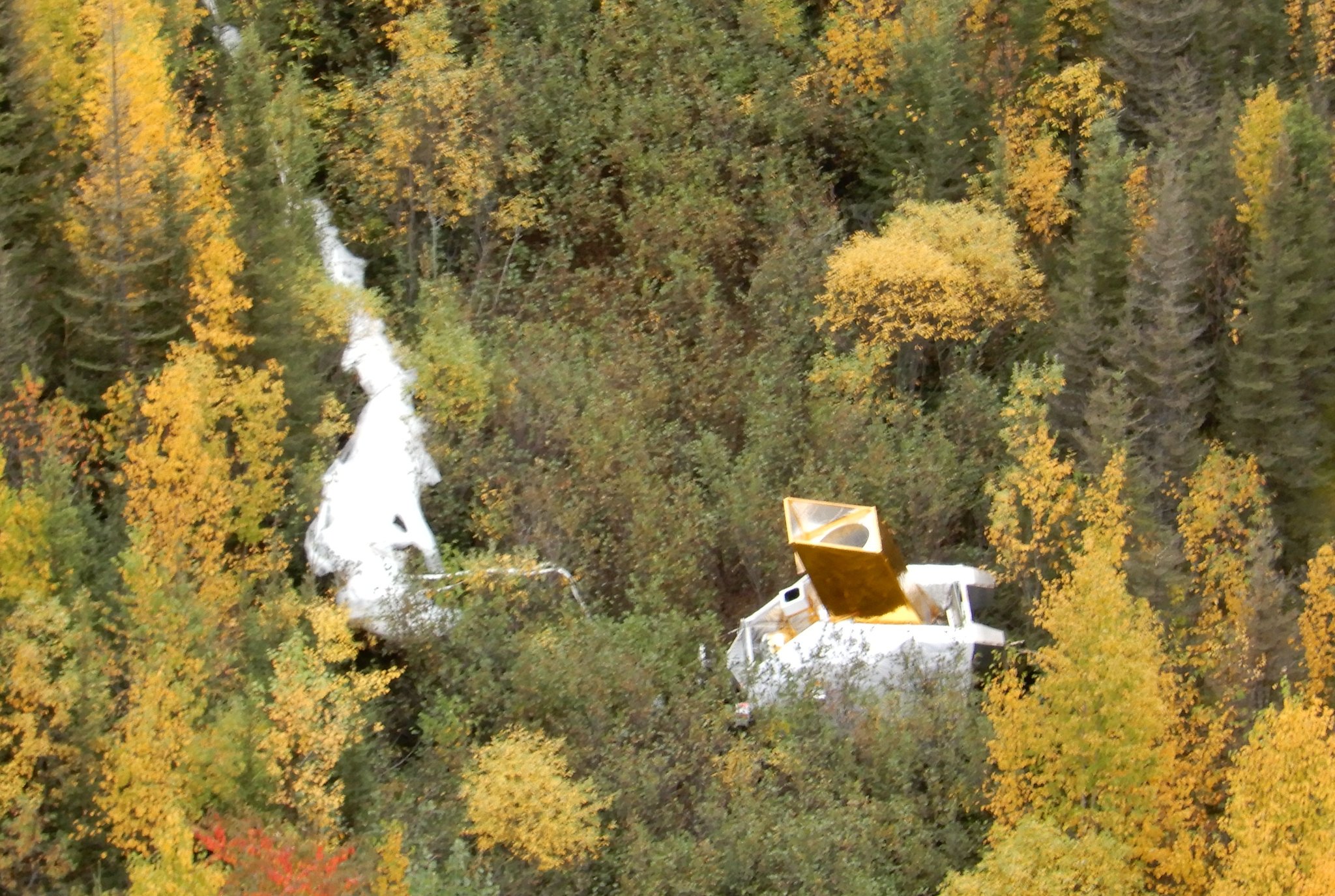Purpose of the flight and payload description
The Polarized Instrument for Long-wavelength Observation of the Tenuous interstellar medium (PILOT) is a balloon-borne experiment that aims to measure the polarized emission of thermal dust at a wavelength of 240 µm (1.2 THz). PILOT is an international project that involves several European institutes. The institutes that have contributed to hardware developments for PILOT are IRAP and CNES in Toulouse (France), IAS in Orsay (France), CEA in Saclay (France), Rome University in Rome (Italy) and Cardiff University (UK). At left we can see an scheme of the instrument (click to obtain an enlarged and detailed version) while below there is a brief description of its elements.
The optics of the instrument are composed of an off-axis paraboloid primary mirror (M1) with diameter of 0.83 m and an off-axis ellipsoid secondary mirror (M2). The combination respects the Mizugushi-Dragone condition to minimize depolarization effects. All optics following M1, including M2, are cooled at cryogenic temperature of 2 K.
Following the Gregorian telescope, the beam is folded using a flat mirror (M3) towards a re-imager and a polarimeter. Two lenses (L1 and L2) are used to re-image the focus of the telescope on the detectors. A Lyot-stop is placed between the lenses at a pupil plane that is a conjugate of the primary mirror. A rotating Half-Wave Plate (HWP), made of Sapphire, is located next to the Lyot-stop. The bi-refringent material of the HWP introduces a phase shift between the two orthogonal components of the incident light. A polarization analyzer consisting of parallel metallic wires is placed at a 45º angle in front of the detectors, in order to transmit one polarization to the transmission focal plane and reflect the other polarization to the reflection focal plane.
Each of the focal planes include 1024 bolometers in 4 arrays of 16 X 16 pixels. They are cooled to 300 mK by a closed cycle 3He fridge. The detectors were developed by CEA/LETI for the PACS instrument on board the Herschel satellite.
In order to reconstruct the pointing of the instrument, PILOT counts with the Estadius stellar sensor developed by CNES for stratospheric applications. This system provides an angular resolution of a few arcseconds, which is required to optimally combine observations of the same part of the sky obtained with various polarization analysis angles. A key feature of Estadius is that remains accurate even with fast scan speeds. An internal calibration source is used inflight to calibrate time variations of the detector responses. The source is located behind mirror M3 and illuminates all detectors simultaneously.
PILOT is carried to the stratosphere by a generic gondola suspended under an open stratospheric balloon through a flight chain. PILOT uses a 803Z class balloon, with a helium gas volume of 800.000 m3 at ceiling altitude. The instrument can be pointed towards a given sky direction using the gondola rotation around the flight chain and rotation of the instrument around the elevation axis. Scientific observations are organized into individual observing tiles during which a given rectangular region of the sky is scanned by combining the azimuth and elevation rotations.
Video of the launch operations and ascent of the balloon
Details of the balloon flight
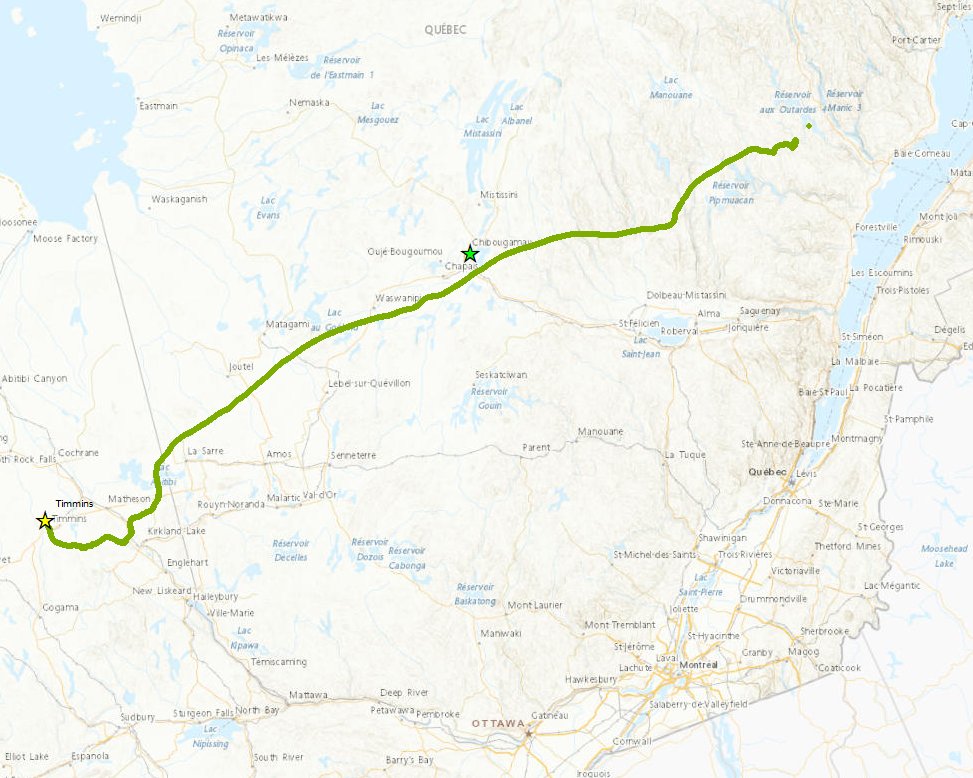
Balloon launched on: 9/24/2019 at 5:36 local time
Launch site: Timmins Stratospheric Balloon Base, Ontario, Canada
Balloon launched by: Centre National d'Etudes Spatiales (CNES)
Balloon manufacturer/size/composition: Zero Pressure Balloon model 803Z Airstar 800.000 m3
Flight identification number: NIMBUS-4
End of flight (L for landing time, W for last contact, otherwise termination time): 9/25/2019
Balloon flight duration (F: time at float only, otherwise total flight time in d:days / h:hours or m:minutes - ): 26 h
Landing site: N of Saguenay, Quebec, Canada
Campaign: STRATO SCIENCE 2019
Overall weight: 3058 kg
This was the third flight of the PILOT instrument. The balloon was launched from the Timmins Stratospheric Balloon Base in Ontario, Canada on September 24 2019 at 5:36 AM local time. The experiment reached ceiling altitude about 2.3 hr after launch. The instrument reached an altitude of 39 km, slowly decreasing to 37 km during the first day of the flight. The altitude decreased to 34 km during the night due to the lower buoyancy force of the balloon. During the second day, the altitude rose again, reaching 37.5 km just before the gondola was dropped in Quebec. The balloon followed a trajectory towards the north-east during most of the flight as can be seen in the map above. The gondola landed north of Saguenay, Quebec and was brought back to the Timmins base using a helicopter and a truck.
The flight lasted approximately 26 hr, during which 21 hr of scientific observations were obtained. Two telemetry stations were used for the flight one located at the launch base and another used as downrange station in Chibougamau.
External references
- PILOT website at IRAP
- Performance of the polarization leakage correction in the PILOT data Experimental Astronomy, Volume 56, Issue 1, p.197 (2023)
- Strato-Science 2019 campaign Canadian Space Agency website
- We were looking waaayyy up at a very large balloon My Timmins Now
15253If you consider this website interesting or useful, you can help me to keep it up and running with a small donation to cover the operational costs. Just the equivalent of the price of a cup of coffee helps a lot.

